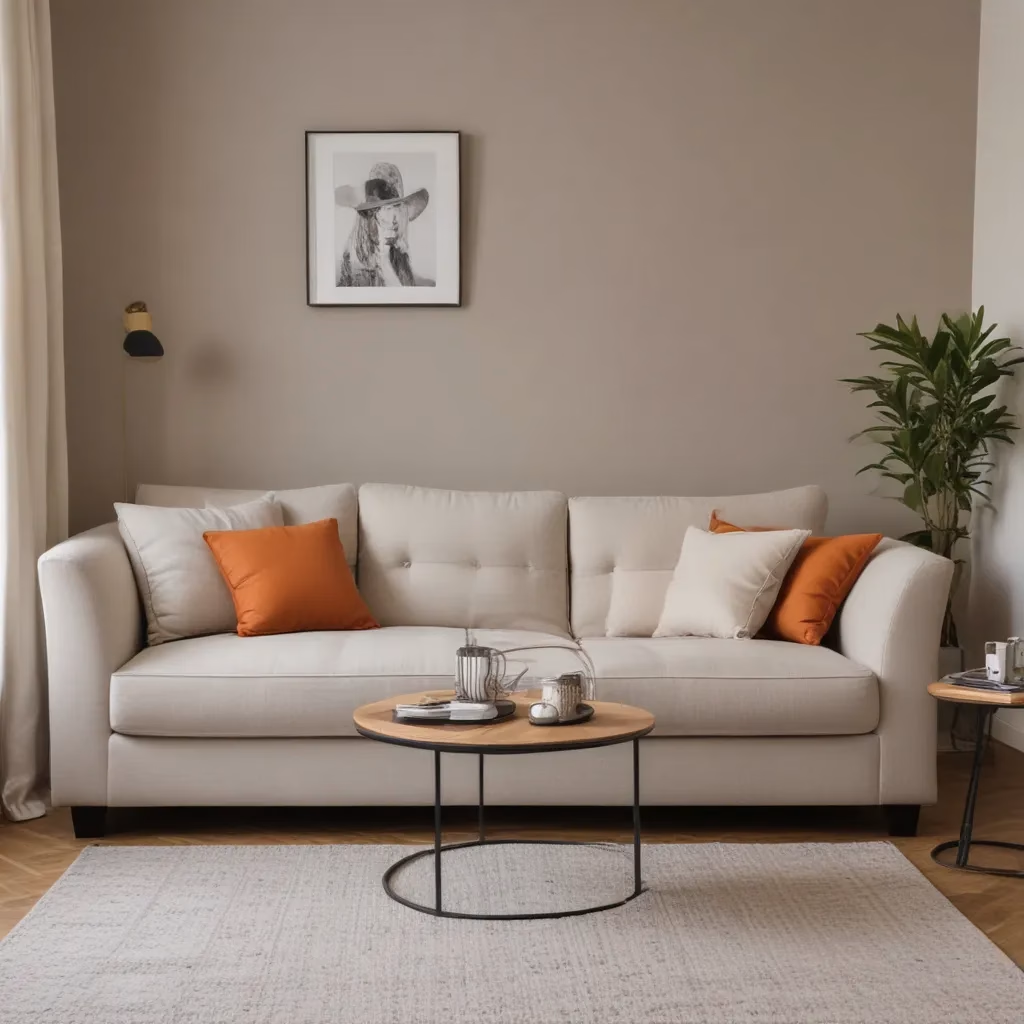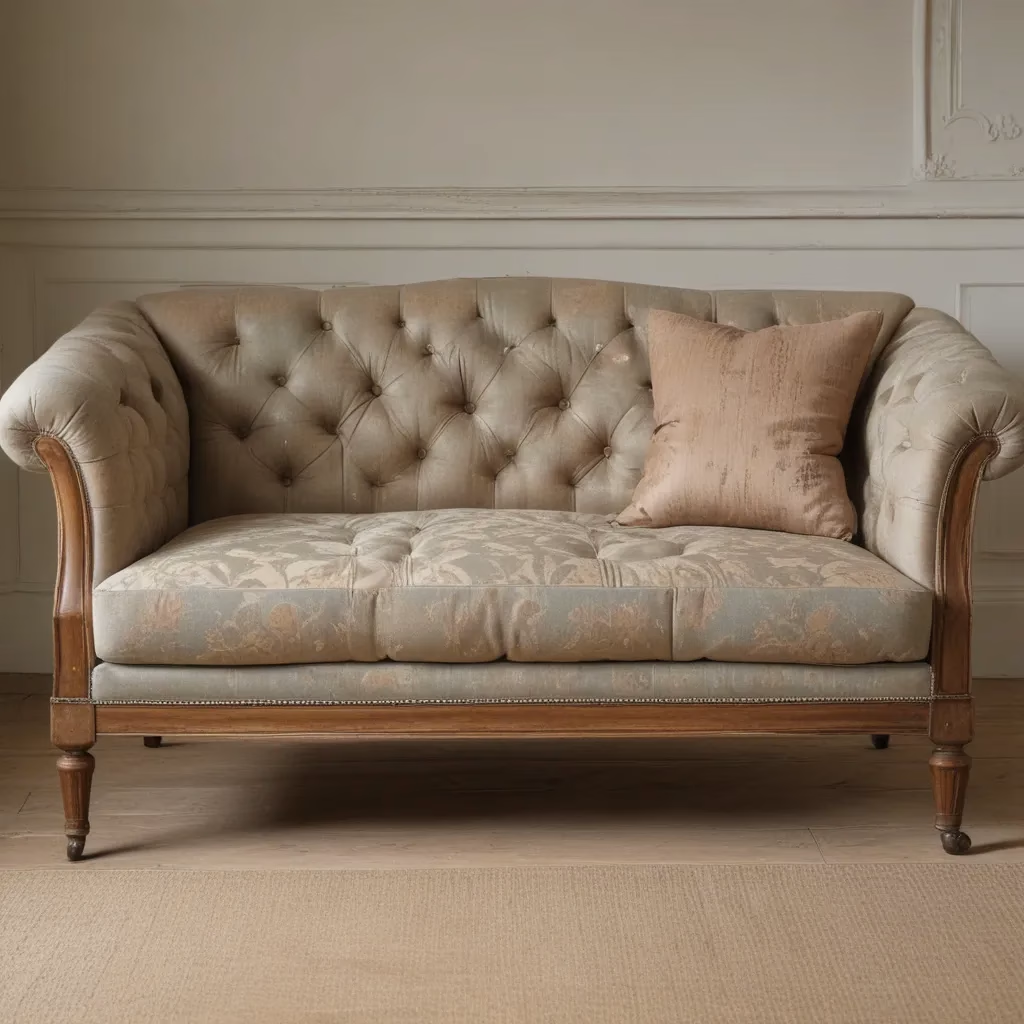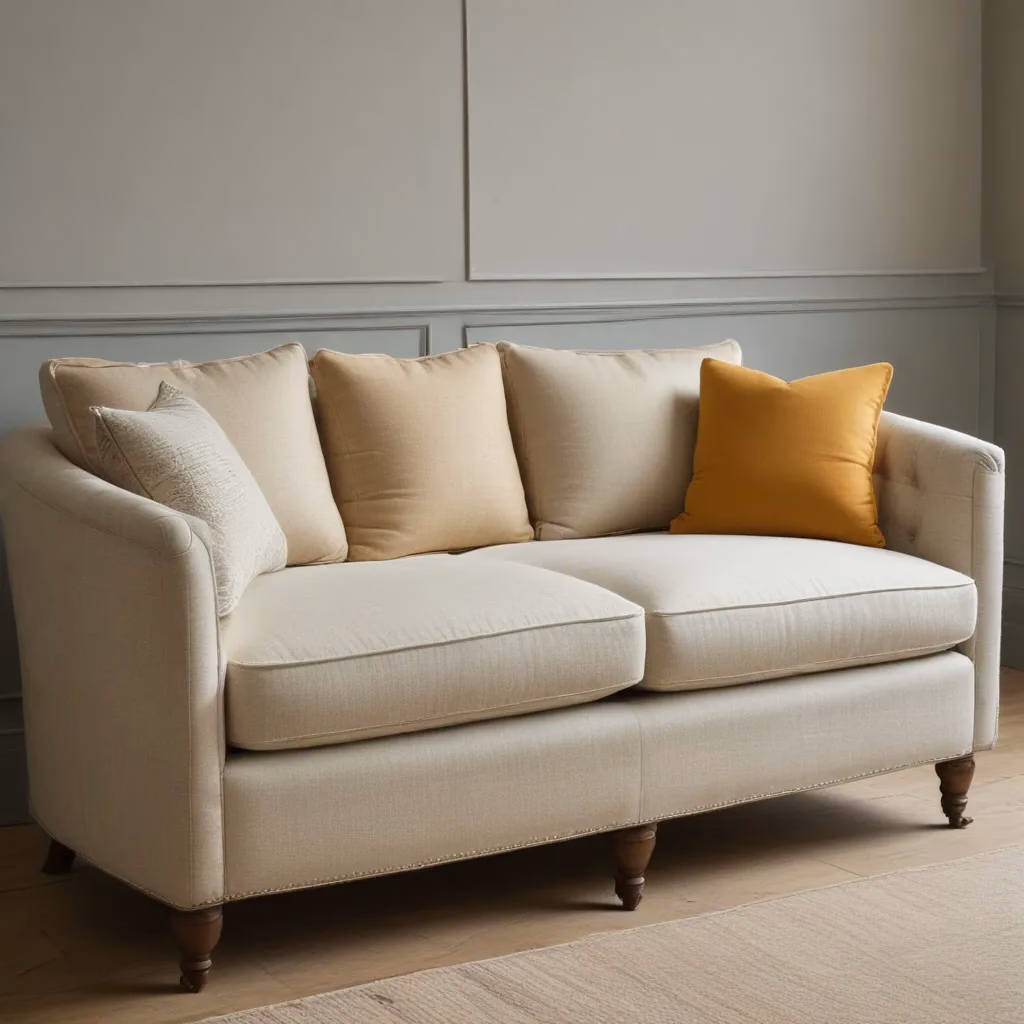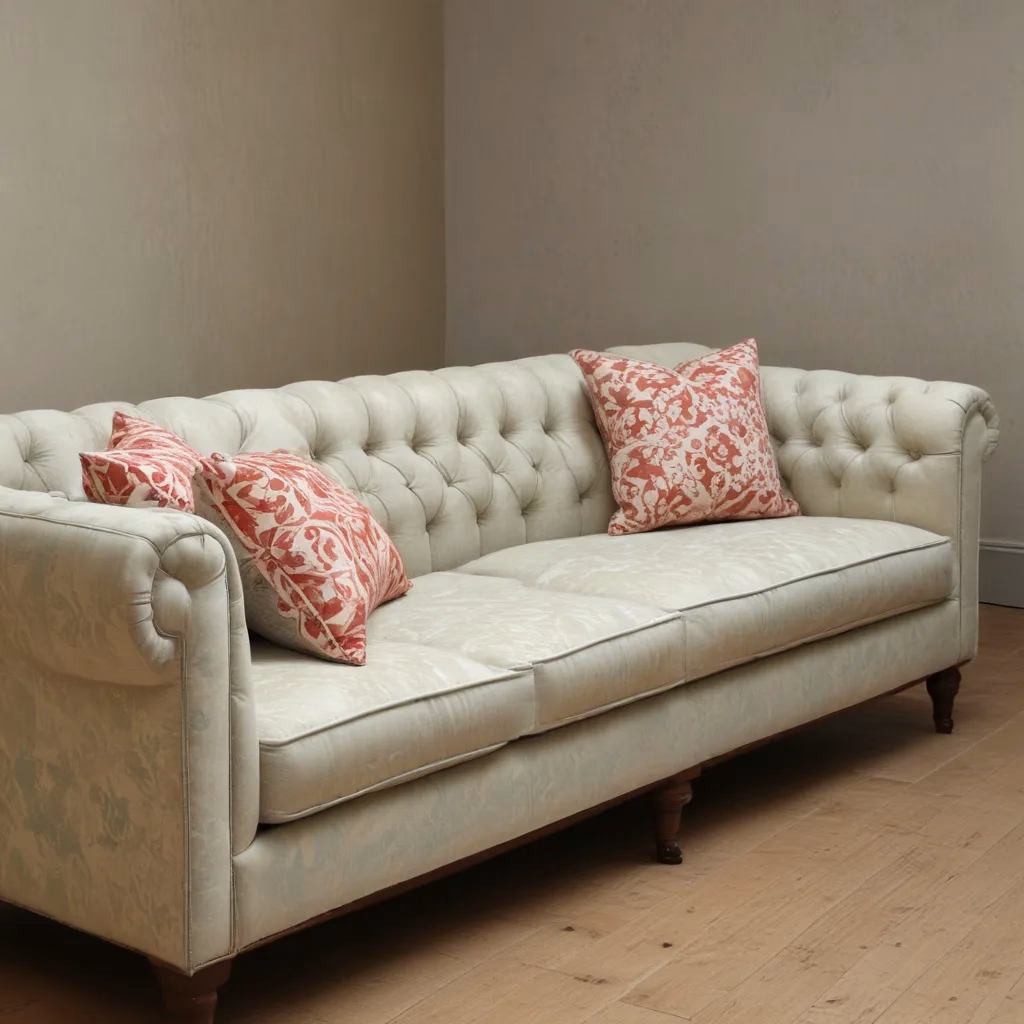
As an experienced furniture consultant and interior design writer, I’ve long understood the transformative power of thoughtful sofa placement and living room layout strategies. The right arrangement can make all the difference, transforming a generic room into a cosy, conversation-friendly haven.
Now, this might seem counterintuitive…
Choosing the Right Sofa Size and Shape
When it comes to sofas, size and shape are paramount. The sofa is often the centrepiece of the living room, so selecting one that complements the dimensions of your space is crucial. For smaller rooms, opt for a more compact, loveseat-style sofa that doesn’t overwhelm. In larger areas, a generously proportioned sectional or L-shaped sofa can help define different zones.
But it’s not just about footprint – the visual impact of the sofa’s silhouette also matters. Tufted upholstery, sleek mid-century lines, or plush, rolled arms can all evoke distinct aesthetics. Consider how the sofa’s style will harmonize with the room’s existing decor and architectural features.
Arranging Seating for Conversation
Once you’ve chosen the perfect sofa, it’s time to think about placement. While the temptation may be to push furniture against the walls, this can actually make a space feel closed off and disconnected. Instead, try floating the sofa in the centre of the room, with accent chairs or loveseats positioned to encourage face-to-face conversation.
“Having two chairs directly across from your sofa is a great way to prioritize conversation while still making sure your TV can also be a priority,” notes Emily Henderson, a renowned design expert. This classic layout keeps sightlines open while creating an intimate seating area.
For larger living rooms, a sectional sofa can be an excellent choice. Arrange it to face a fireplace, windows, or even a blank wall, then add complementary armchairs or ottomans to fill out the space. This arrangement allows for both cosy conversation and ample seating.
Incorporating Accent Pieces
Sofas shouldn’t have to shoulder all the heavy lifting when it comes to living room decor. Thoughtfully chosen accent pieces can help elevate the space and support the overall layout.
Side tables, for instance, provide a convenient spot for lamps, books, and decorative objects, while also defining distinct zones within the room. Carefully selected end tables or ottomans can double as extra seating or informal surfaces for drinks and snacks.
Balancing Open and Cosy Zones
While creating conversation-friendly arrangements is important, it’s also crucial to consider the overall flow and functionality of the living room. Striking the right balance between open and intimate zones can make the space feel both welcoming and purposeful.
For example, you might position the sofa and chairs to face each other, establishing a cosy conversation area. But by placing a console table or narrow bookshelf behind the sofa, you can delineate a separate walkway and maintain a sense of openness.
“Don’t be afraid of standard-sized furniture in a small space,” advises Henderson. “Sometimes ‘small space’ specific furniture can make a room look even smaller.”
Fabric and Upholstery Selection
The material and pattern of your sofa’s upholstery can have a significant impact on the overall aesthetic and practical considerations of the living room. When selecting fabrics, look for options that balance style and durability.
Performance fabrics, such as stain-resistant polyester or durable microfiber, can be excellent choices for high-traffic areas or homes with pets and children. These materials not only hold up well to daily wear and tear but also make spot cleaning a breeze.
For a more elegant, luxurious look, consider soft velvet or luscious leather upholstery. These materials add depth and richness to a room, though they may require more diligent maintenance. Patterns, too, can be a powerful design tool – bold florals, subtle stripes, or muted geometrics can all contribute to the room’s overall aesthetic.
Sofa Comfort and Aesthetics
While the visual appeal of a sofa is essential, it’s equally important to prioritize comfort. After all, a living room is meant to be a space for relaxation and unwinding.
Investing in high-quality memory foam cushions or plush down-filled backs can make all the difference in how the sofa feels. And don’t forget to accessorize with plenty of cosy pillows and throws – these extra layers of texture and softness can transform even the most formal sofa into an inviting oasis.
Lighting, too, plays a crucial role in shaping the ambiance of a living room. Strategically placed floor lamps, table lamps, and even a statement chandelier can create a warm, intimate atmosphere perfect for conversation and relaxation.
Sofa Cleaning and Care
No matter how carefully you choose and arrange your living room furniture, it’s essential to keep your sofa in top condition. Regular cleaning and maintenance will not only preserve the upholstery’s appearance but also extend the lifespan of your investment.
For day-to-day spot cleaning, a gentle soap and water solution or a specialized fabric cleaner can help tackle minor stains and spills. When it comes time for a more thorough clean, consider hiring a professional upholstery cleaning service to deep clean the sofa and apply a protective treatment.
Proper care also involves rotating and fluffing cushions, keeping the sofa free of debris, and protecting it from direct sunlight – all of which can help prevent premature wear and fading.
Living Room Furniture Placement
While the sofa may be the focal point, thoughtful placement of other living room furniture can further enhance the space’s functionality and aesthetic appeal. Arrange complementary pieces, such as armchairs, coffee tables, and side tables, to create a cohesive and visually balanced layout.
“Pay attention to the architecture of the space and center and balance things accordingly,” advises interior designer Annie Elliott. This strategic approach ensures that the room feels intentional and well-designed, rather than haphazardly arranged.
Additionally, consider the flow of the room – positioning furniture to facilitate easy movement and conversation. Avoid creating bottlenecks or obstructing pathways, as this can make the space feel cramped and uncomfortable.
Sofa Buying Guides and Tips
When it comes time to invest in a new sofa, be sure to do your research. Measure your living room carefully to double-check that the piece will fit seamlessly, and evaluate the quality of the construction and materials to double-check that it will stand the test of time.
Many retailers offer helpful online tools and buying guides to assist you in the decision-making process. At SofaSpectacular.co.uk, for example, you can explore a wide range of sofa styles, compare features and pricing, and even schedule a virtual consultation with a design expert.
And remember, the perfect sofa is not just about aesthetics – it’s also about finding a piece that aligns with your lifestyle, budget, and long-term needs. With a bit of research and thoughtful planning, you can create a living room that is both visually stunning and exceptionally comfortable.
Example: Living Room Makeover Series with Modular Sectionals



